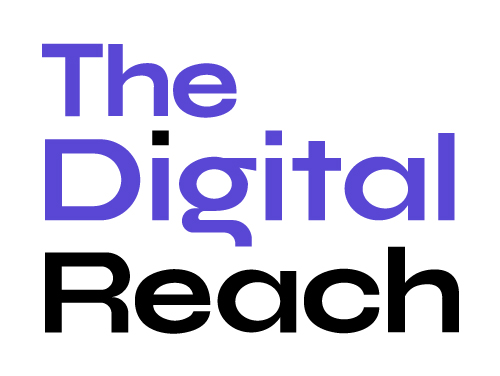A successful strategy that can engage, influence, and educate users to improve brand presence and produce necessary leads is necessary for social media to have a significant influence on businesses. Along with these factors, optimizing B2B content marketing trends further help them gain desired outcomes.
Meaning of Social Media Marketing
Social media marketing refers to the use of social media platforms like YouTube, Facebook, X, LinkedIn, Instagram, and Pinterest to create a brand’s presence, enhance it’s reach, generate leads, bring traffic to websites and sell products and services. In addition, businesses utilize social media platforms to connect with target audiences, answer their queries, build communities, and foster long-term relations.
Moreover, using data analytics, businesses can understand the performance of their social media activities, engagement levels, and campaigns’ performance to identify their strengths and locate areas that need improvement. The real power of social media comes in three core areas including building connections, engagement, and leveraging customer data. Organizations can influence the behavior of their target customers through social media marketing by creating engaging and impactful content that resonates with them and prompts them to take prompt action.
By leveraging social media marketing, businesses can enhance customer engagement and access valuable customer data. This enables them to tailor their offers to each customer’s unique needs and preferences. But, to gain benefits from social media marketing, businesses need a well-aligned strategy. And, this brings us to the next point.
What is Social Media Marketing Strategy and How to Build It?
A social media marketing strategy is a comprehensive plan that guides the social media activities of businesses, including tactics, tools, and tracking metrics to measure the outcome of all activities. The main goal of social media strategy is to drive engagement, build connections with customers, and generate qualified leads that convert into business.
If you want your business to stand out, connect with your ideal customers, provide excellent service and support, and bring in new leads, then you need to know how to craft a winning social media marketing strategy. So, let’s take a look below:
- Determining Social Media Goals: It is important to have clarity on the key goals for social media marketing that can either help in building brand awareness, increasing social media following, generating leads, or gaining more insights about target customers.Once the key purpose of social media marketing is defined, then content and campaigns are created accordingly. It can also be possible that businesses have some or all of the above goals for their social media, but having a clear strategy and content plan for each goal is critical.Moreover, setting metrics for each goal and platform further helps in assessing the performance of social media across channels.
- Understanding Target Audience: The entire social media strategy is built on understanding the target audience, their pain points, and helping them resonate with the brand. Using a planned strategy around a specific customer base enables businesses to create awareness, generate influence, and generate positive feedback among customers to create a positive impact in the market.The ultimate goal is to let customers talk to each other about the product or service and build a constructive environment around business reputation. This can be done by undertaking polls and researching market scenarios via online surveys, polling on different platforms, creating focus groups, and asking for feedback via applications like WhatsApp. Businesses can also leverage social listening on BuzzSumo, Followerwonk, SparkToro, and more to gain insights on buyer personas.
- Competition Analysis: The next step is to perform competitive analysis that will help businesses understand what their key competitors are doing on social media. It includes the social platform they target, type of content and campaigns that they utilize, the frequency of their posts, and their engagement rates.It also helps in understanding how they interact with their customers and their online community, or are they leveraging the influencers’ marketing to boost their presence on social media. Once these factors are analyzed properly, businesses can understand which route they need to take or emulate their competition to create their brand and establish authority.
- Selection of a Social Media Platform: It is critical to understand that every business is different and requires choosing a social media platform that resonates with its key objectives. If a company wants to reach its target audience on social media, it makes more sense to concentrate on the most relevant platforms rather than trying to maintain an active presence on every single one.Each platform, including Facebook, Instagram, LinkedIn, YouTube, X and others, supports a specific content format, and businesses need to identify which platform aligns with their social media goals. If a B2B business intends to publish long-form content like blogs, eBooks, whitepapers, and newsletters, LinkedIn proves to be the best choice.If they need to connect with customers by showcasing their products and services with imagery, Instagram is an ideal option, and if they look forward to connecting with prospective clients and customers, FaceBook is recommended. To resolve customer queries and build customer service channels, X would be an ideal platform.
- Content Planning, Publication, and Measure Performance: After choosing the platform, the next thing is content planning and building a content calendar to stay focused on timelines. Building content around specific themes and tone is important to stay laser-focused on the messaging part.It is relevant to stay on a single message throughout different forms of content like social posts, blogs, polls, and surveys to make an imprint on customers’ minds and generate confidence in business.Publishing content on dedicated timelines helps businesses maintain the frequency of posts as planned earlier.Monitoring community management is critical to building connections and creating positive feedback, and finally, measuring and tracking KPIs can help to understand the overall performance of social media.
Conclusion
To conclude, social media marketing is evolving, and it is important to keep an eye on evolving trends and make modifications to the strategy accordingly. Having a clear strategy plays a pivotal role in implementing all plans on time, and measuring performance via KPIs further helps boost performance. Businesses across industries and sectors can leverage the power of social media along with B2B content marketing strategies to create brand authority, connect with customers and create qualified leads that ultimately convert into customers. Overall, social media marketing with a predetermined strategy helps boost the overall brand presence and build long term relationships with customers, creating brand loyalty.
FAQ’s
Q: What are some goals of social media marketing? If you want to increase brand awareness, grow your following, generate leads, and learn more about your customers, social media marketing is the way to go.
Q: How do I identify my target audience for social media? To be successful on social media, you must first understand your audience. To learn more about the wants and needs of your perfect consumer, run polls, surveys, and focus groups. Additional resources for understanding your buyer persona include social listening tools.
Q: Which social media platform should my business use?
Your objectives and intended audience will determine the optimal platform. In contrast to Instagram’s strong visual content, LinkedIn is perfect for business-to-business content like whitepapers and blogs. In order to choose the most appropriate platforms, you should think about your content format and who you are trying to reach.





